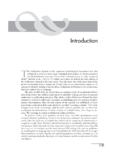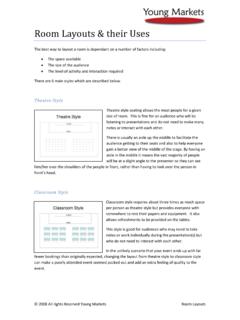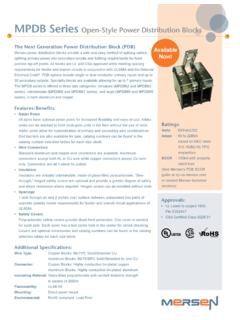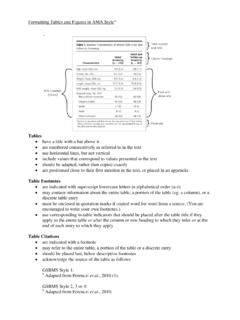Transcription of Style - Upfro Associates, Inc
1 Style A home with one story of living area. The roof structure typically has a medium slope. The attic space is limited and is not intended for living area. 2004 Marshall & Swift/Boeckh A residence with two levels of living area, characterized by a steep roof slope and dormers (which project from the roof and have windows on their fronts). Because of the roof design, the area of the second floor is usually 40% to 70% of the ground floor area. 2004 Marshall & Swift/Boeckh A residence with finished living area on two floors. The area of each floor is approximately the same. The roof structure has a medium slope. The attic space is limited and is not intended for living area. 2004 Marshall & Swift/Boeckh A residence with three levels of living area, characterized by a steep roof slope and dormers (which project from the roof and have windows on their fronts).
2 Because of the roof design, the area of the third floor is usually 40% to 70% of the ground floor area. 2004 Marshall & Swift/Boeckh A residence with finished living area on three floors. The area of each floor is approximately the same. The roof structure has a medium slope. The attic space is limited and is not intended for living area. 2004 Marshall & Swift/Boeckh A residence with two levels of living area, with the lower level being partially unfinished and normally partially below grade (with no basement below it). The entrance is a split-foyer entrance. 2004 Marshall & Swift/Boeckh A residence that is divided side to side, with three levels of finished living area: lower level, intermediate level and upper level. The lower level is immediately below the upper level as in a two-story residence.
3 The intermediate level, adjacent to the other levels, is built on a grade approximately one-half story higher than the lower level. Split-level residences have a split roof design. Use the Back Split Style for homes that are divided front to back. 2004 Marshall & Swift/Boeckh A residence that is divided front to back, with three levels of finished living area: lower level, intermediate level and upper level. The lower level is immediately below the upper level as in a two-story residence. The intermediate level, adjacent to the other levels, is built on a grade approximately one-half story higher than the lower level. Back Split homes have a split roof design. Use the Split Level Style for homes that are divided side to side. 2004 Marshall & Swift/Boeckh A home made of adobe brick, found mainly in the southwest region of the United States.
4 Decidedly Western in presentation with various wood beams for both support and ornamentation. Roofs are typically flat and made of brick and are usually coated with Stucco. 2004 Marshall & Swift/Boeckh A residence designed from combinations of square and rectangular geometric patterns, blending both interiors and exteriors. Contemporary residences typically contain multiple roof lines, where roofs are flat or flat with a slight pitch (shed roof). Exteriors are often plain with little or no ornate trim, typically with extensive use of glass. The designs of these residences are more modern and less traditional. They typically have wide open interiors with fewer partitions than other traditional home styles . 2004 Marshall & Swift/Boeckh A residence with 2-1/2 or 3 stories of living area, typical of the architectural Style in the late 19th century.
5 Victorians typically have elaborate exterior and interior finishes and trims, including 18" of gingerbread on at least three lines of the house. They also include bay windows, turrets, tall chimneys and extensive porches. For Victorians with extensive use of finishes and trims, use the Ornate Victorian Style , which typically has 36" gingerbread. 2004 Marshall & Swift/Boeckh A residence with 2-1/2 or 3 stories of living area, typical of the architectural Style in the late 19th century. Ornate Victorians typically have extensive use of elaborate exterior and interior finishes and trims, including 36" of gingerbread on at least three lines of the house. They also include bay windows, turrets, tall chimneys and extensive porches. Use the Victorian Style for less extensive use of finishes and trim, including typically 18" gingerbread.
6 2004 Marshall & Swift/Boeckh A traditional 2-1/2-story home, usually of pre-1940 construction. Generous use of wood trim, and interior and exterior finishes, with high partition density inside. 2004 Marshall & Swift/Boeckh This typically 2-story home is generally found in the Eastern part of the United States. It is characterized by its flat roof and ornate wood trim along the exterior roof line. It is generally square in design and is typically an early 20th century or older structure. Exterior walls are normally painted wood. 2004 Marshall & Swift/Boeckh A small, one-story house popular in the early 20th century, typically with a front porch (either open or enclosed). The most common Bungalows, including California Bunglows, have wood siding or wood shingle exterior walls and wood shingle roofs.
7 Large roof overhangs are common and walls flow front to back. 2004 Marshall & Swift/Boeckh A small, one story cabin-like home, typically used as a seasonal home or a second dwelling on a property. Cottages generally have a minimal or no foundation, instead resting on posts at the corners of the home. 2004 Marshall & Swift/Boeckh Subsidized or substandard housing that resembles barracks or other low-grade habitational structures found more often as part of a government facility or government subsidized facility. These homes have limited trim, if any, and minimal partitions. They typically comply with Federal government codes but not necessarily standard building codes. 2004 Marshall & Swift/Boeckh A home in the Mediterranean Style , including stucco exterior walls, typically pastel or white in color, red tile roof, arched openings and considerable use of wrought iron.
8 Often found with arched windows and balconies. 2004 Marshall & Swift/Boeckh Center Unit An attached single-family residence with two levels of living area, with the lower level being fully finished and normally partially below grade (with no basement below it). The entrance is a split-foyer entrance. Each bi-level Rowhouse unit is one of a group of two or more units joined by common walls. Such units never have units above or below, always have individual exterior walls and never have more than two walls common with adjacent units. An End Unit is at the end of a row, with only one other unit adjacent to it. A Center Unit is inside a row, with other units on either side. This Style is especially common throughout Canada. 2004 Marshall & Swift/Boeckh End Unit End Unit An attached single-family residence with two levels of living area, with the lower level being fully finished and normally partially below grade (with no basement below it).
9 The entrance is a split-foyer entrance. Each bi-level Rowhouse unit is one of a group of two or more units joined by common walls. Such units never have units above or below, always have individual exterior walls and never have more than two walls common with adjacent units. An End Unit is at the end of a row, with only one other unit adjacent to it. A Center Unit is inside a row, with other units on either side. This Style is especially common throughout Canada. 2004 Marshall & Swift/Boeckh Center Unit An attached single-family residence with three levels of finished living area: lower level, intermediate level and upper level. The lower level is immediately below the upper level as in a two-story residence. The intermediate level, adjacent to the other levels, is built on a grade approximately one-half story higher than the lower level.
10 Each tri-level Rowhouse unit is one of a group of two or more units joined by common walls. Such units never have units above or below, always have individual exterior walls, and never have more than two walls common with adjacent units. An End Unit is at the end of a row, with only one other unit adjacent to it. A Center Unit is inside a row, with other units on either side. This Style is especially common throughout Canada. 2004 Marshall & Swift/Boeckh End Unit End Unit An attached single-family residence with three levels of finished living area: lower level, intermediate level and upper level. The lower level is immediately below the upper level as in a two-story residence. The intermediate level, adjacent to the other levels, is built on a grade approximately one-half story higher than the lower level.





